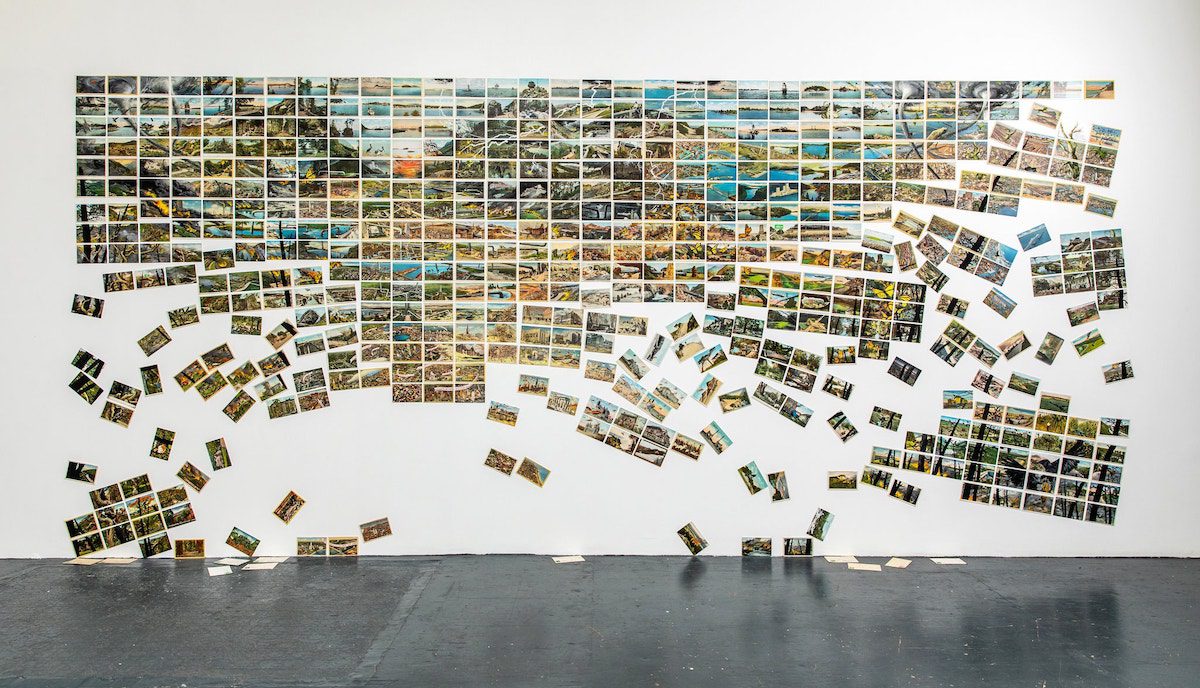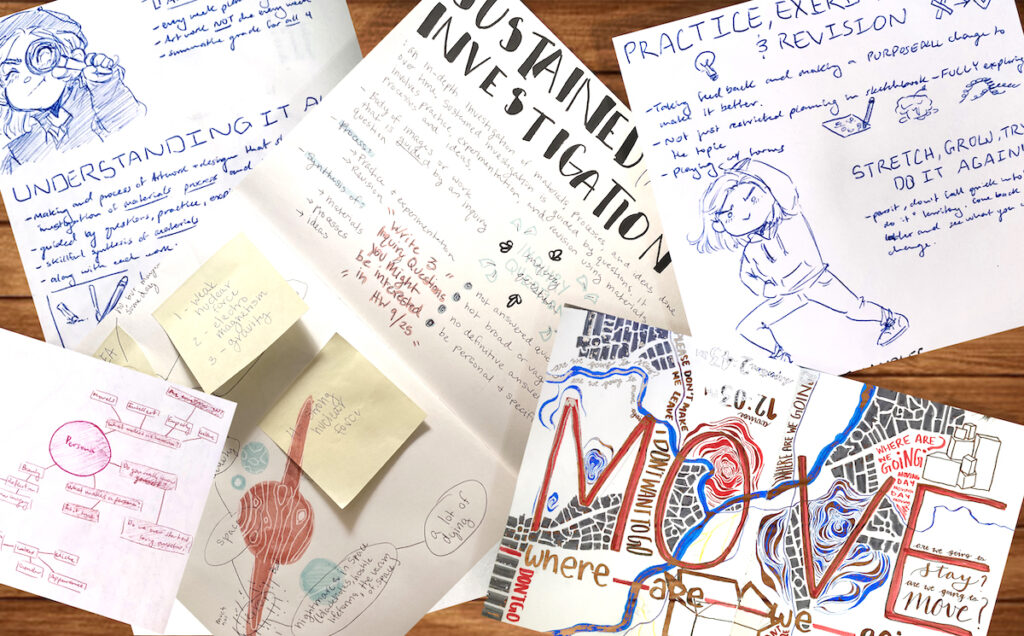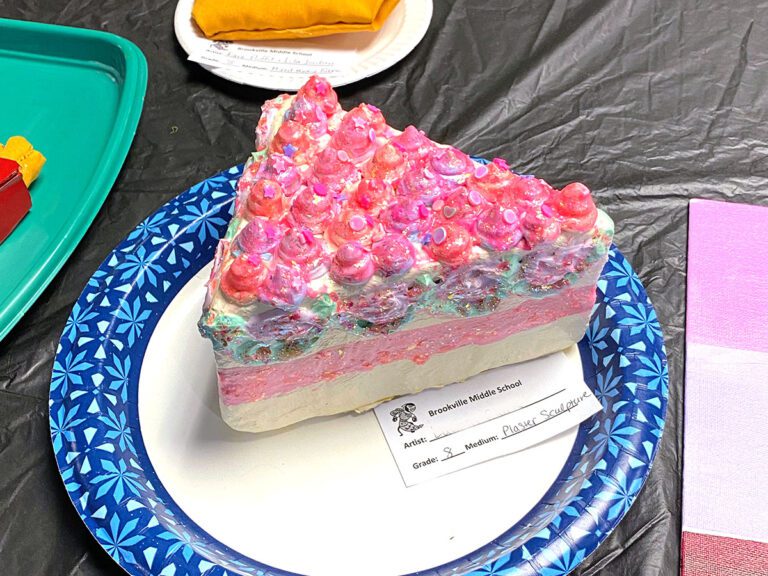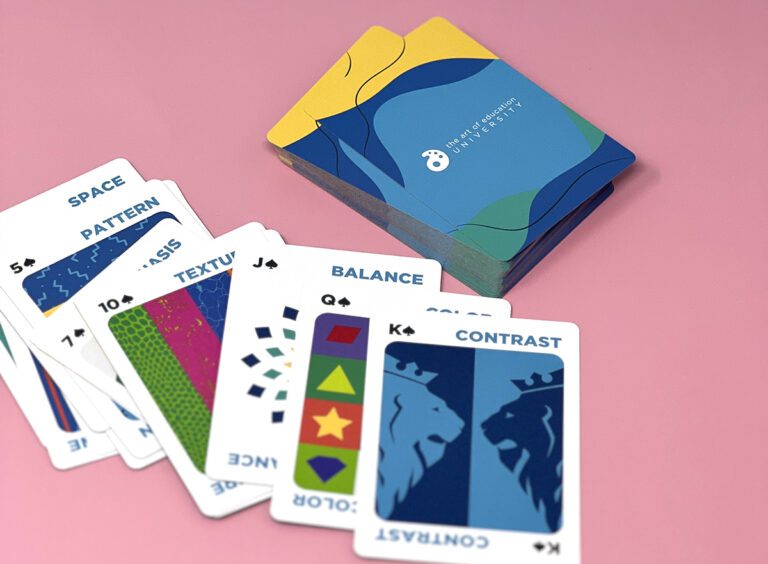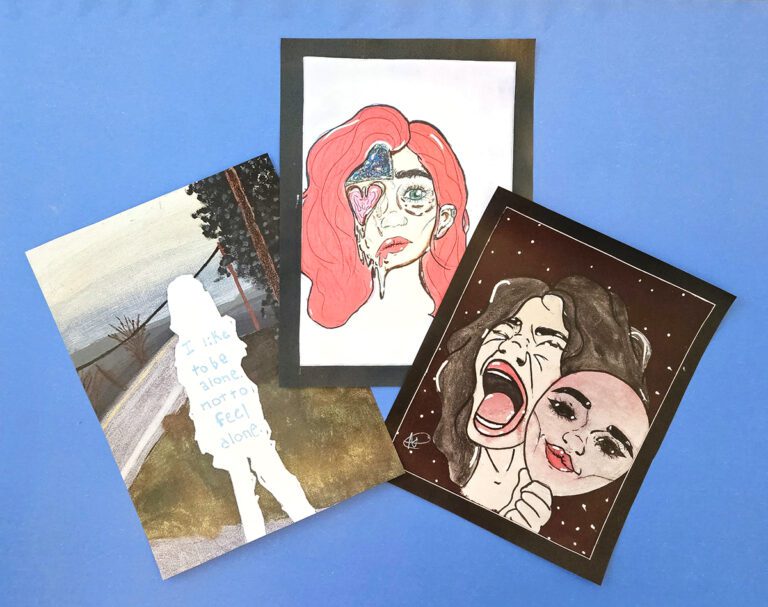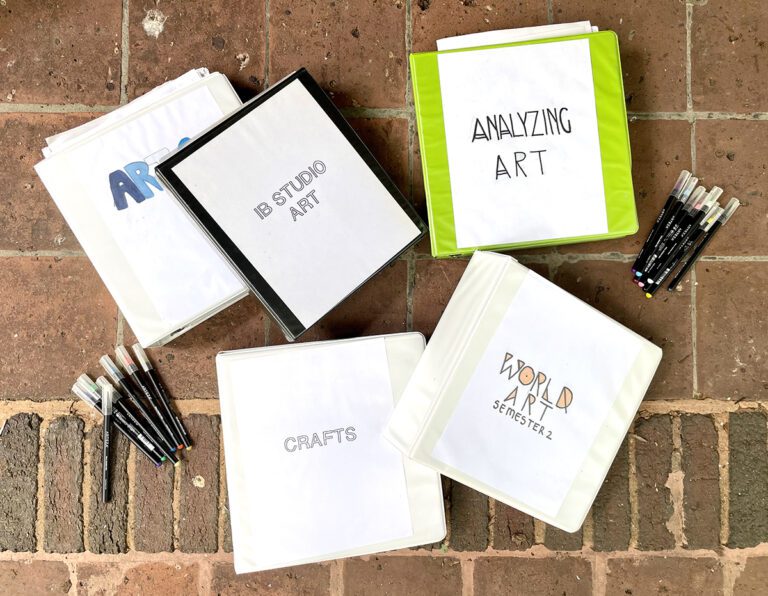Wrapping your head around the logistics and expectations of the (rather) new AP Art & Design portfolio can give anyone a headache. How do I start to explain these big concepts to my students?
Take the very first step by unpacking the AP language to support student understanding. Connecting artists who clearly demonstrate these concepts will guide your students toward their own development of ideas.
Inquiry and Sustained Investigation:
What specific question(s) can you ask to guide your creation process?
Choosing an inquiry question can be challenging at best. Students need to choose a topic that interests them and sustains them for months of artmaking. Sometimes students choose an inquiry question and get bored after three pieces. Sometimes students are not personally connected to the inquiry question they chose. You can help students develop inquiry questions that are both large and specific at the same time. Remind students that this is an ongoing process; sometimes, we start with an idea that isn’t quite clear. The inquiry question will become more defined as it evolves through each students’ creative process. It’s important to keep reflecting on the process, outcomes, and growth to clarify and define our ultimate line of inquiry.
Synthesis of Materials:
How do artists make intentional media decisions to impact their concept?
Sometimes students create with media they are most comfortable with, but may not connect fully with their concept. Consider artists who use media specifically and intentionally to enhance the meaning of their work. For example, if you are making artwork about food, using food somehow in the art creation supports this idea of synthesis. Students can move beyond drawing a still life of food in graphite by painting with spices, creating an assemblage using food, or photographing the decay of food over time.
Process:
How do artists make their thinking visible?
What’s exciting about the process is that it can look vastly different for each student. Engage students in the discussion about what process could look like and not what it must look like. Pushing students beyond their preconceived ideas of “process” will not only support this section of the portfolio but also empower students to think more creatively in their art creation.
When you begin talking about what planning and process look like, make sure to engage students in the various ways artists plan. It’s a good reminder that artists don’t always draw thumbnail sketches to plan out their artwork. Equip students at the beginning of the year by collaboratively brainstorming all the different ways your students might start and work through their creating process.
Revision:
How do artists reflect on their work to adjust, expand, or change direction in a series of work?
One of the biggest hang-ups with students is demonstrating that revision falls inside the “process” parameters. When students think about demonstrating process and revision, they think about documenting their step-by-step process to get to an end goal. Instead, artists view process, including revision, as an ongoing journey that guides their work toward clarity of meaning or purpose. While revision could look like tweaking proportions or changing the background color, it could also mean combining artworks or creating new work in response to the journey.
Let’s take a closer look at artists who support students’ understanding of these concepts.
Merritt Johnson
Developmentally, all students are grappling with their sense of identity. Pushing students to think beyond the cliché inquiries and images of identity, on the other hand, is a true challenge. Merritt Johnson, a Native American, and multidisciplinary artist, confronts identity through performance and objects. In her works, Cleopocahontra and, Open Container, Johnson uses history inspired textiles to cover and camouflage the self. In her works, Border Woman and Mindset (Sweetgrass), Johnson explores the context of materials and objects. These photographs become the artwork just as much as the objects themselves. Johnson’s work is a great example for 3D Design students and 2D Design when considering how a student might use photography to document the work.
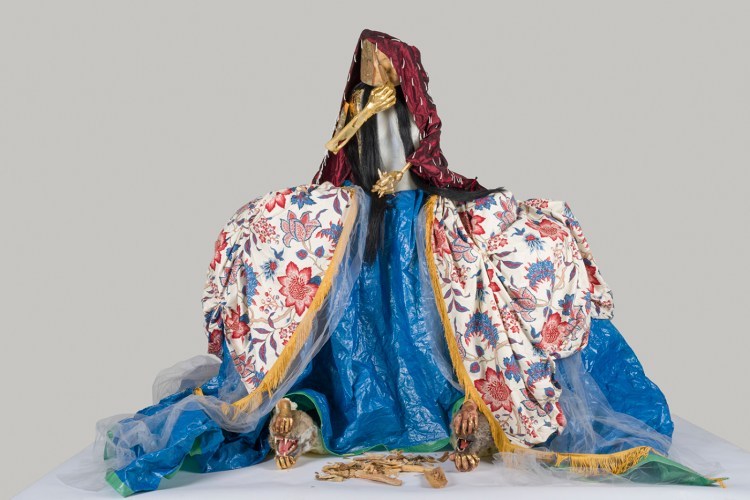
Guiding Questions:
- In what ways does Johnson intentionally consider the impact of each media, display, and form she uses?
- Consider the theme of identity. How many ways can you think of depicting this idea? List as many as you can in five minutes.
Julie Mehretu
Julie Mehretu creates very large scale, abstracted landscape paintings. Her work is steeped in examining how the American landscape has been impacted by historical events. At first glance, you might not understand her work in this context. After listening to her talk through her process, however, you can see how complex her work is, including historical context and politicized events. Her brush strokes respond to these events or to events and accounts that have gone missing from those historical landscapes. She also screenprints pixels from the original images, both merging and layering technology and history.
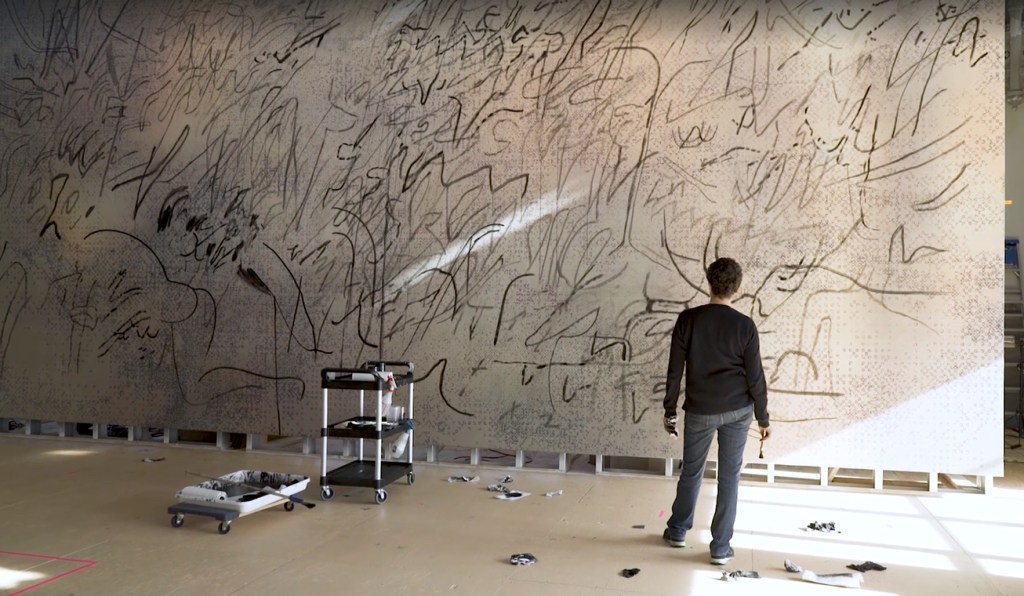
Guiding Questions:
- How does Mehretu use history and personal reflection to respond through her work?
- How does knowing Mehretu’s process provide a rich context to your understanding of the artwork?
- What research can you do to enhance the meaning of your artwork?
David Opdyke
David Opdyke creates sculptural and often architectural works that comment on environmental degradation reflected in our society. His work, This Land, while not sculptural in a traditional sense, demonstrates the use of multiple artworks to create a larger whole. This work is a great example of appropriation through vintage postcards, modified through his illustrations, to convey meaning. Students can not only gain a deeper understanding of appropriation but also how artwork can start as an exploration on a small scale that morphs into something larger both in size and in meaning.
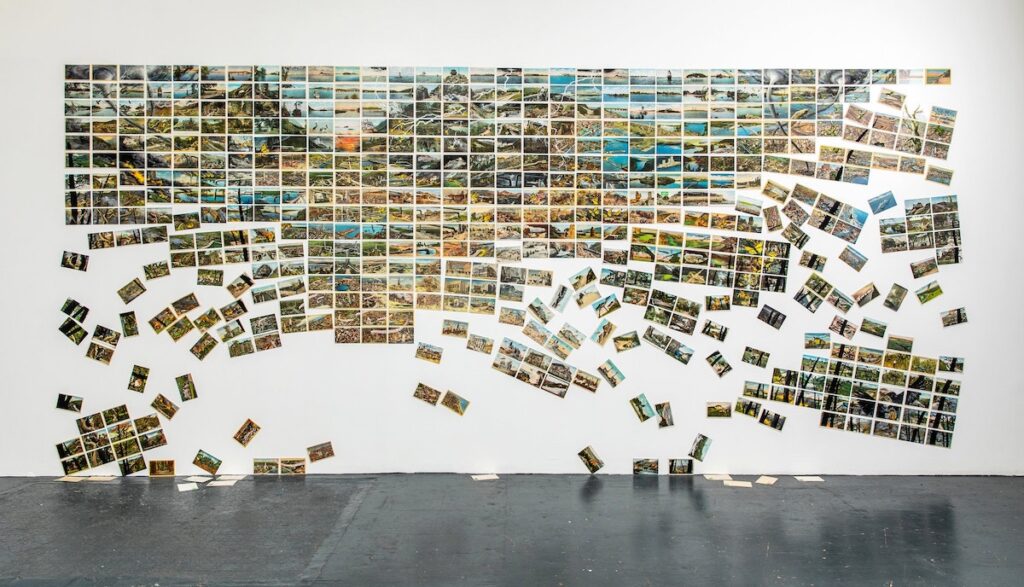
Guiding Questions:
- How does Opdyke’s work, This Land, convey multiple meanings depending on how it is viewed?
- How does the substrate (or surface) impact the meaning of the artwork?
Mark Bradford
Mark Bradford explores décollage and collage techniques using familiar materials from his childhood and community, such as signage from fencing around empty lots or perm end-papers from a salon. Through his work, we are confronted with imagery that is both inviting and complex. Bradford’s work is a great example for students to visualize how to appropriate and deconstruct imagery in a sophisticated way. His works such as Daddy, Daddy, Daddy, and Scorched Earth are examples that could go in either 2D Design or Drawing portfolios. By collaging with intentional media choices, Bradford demonstrates both strong design elements and sophisticated abstract marks.
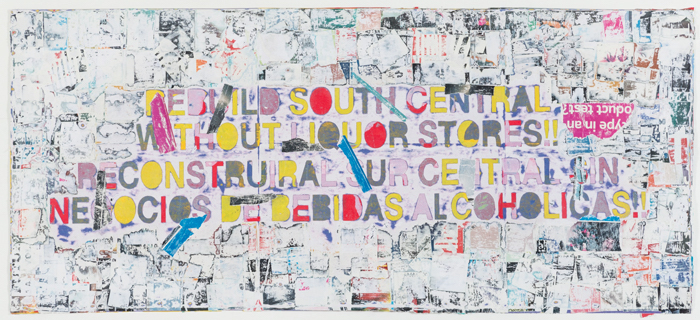
Guiding questions:
- How does the selection of materials Bradford uses in his works reinforce the meaning of the artwork?
- Consider one of your finished artworks. In what ways could you deconstruct and reconstruct it into a new artwork? How will this process create new meaning?
El Anatsui
El Anatsui’s work uses discarded materials such as metal bottle caps to assemble and create rich textile installations. Through his work, students can easily connect with his ideas of sustainability through his material choices. His work is a great example of transforming materials into another art form and considering how scale impacts audience engagement and understanding.
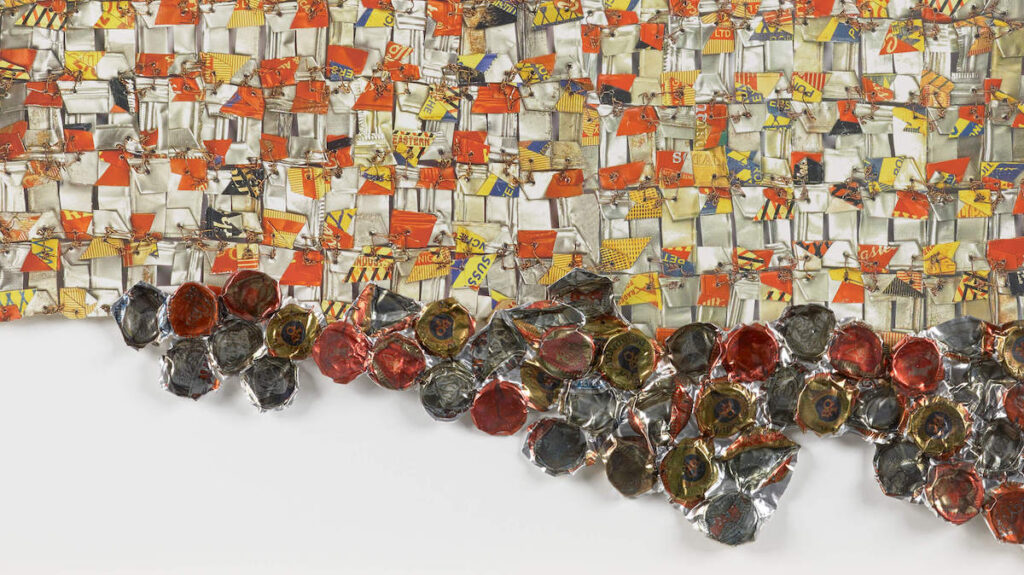
Guiding questions:
- How does the scale of Anatsui’s work impact the space? How does the space the work is displayed impact the meaning of the work?
- Looking at one of your finished artworks, how could you utilize other materials or forms to tell this same story? How might different materials and forms help convey meaning through a different experience?
Wendy Red Star
Wendy Red Star’s artwork is a prime example of how students can set up a work to be experienced as an installation, through individual pieces, or photographic documentation. As a Native American artist, Red Star creates environments loaded with culturally appropriated imagery and context. Red Star’s work engages complex historical erasure juxtaposed with contemporary views of Native Americans. Her work regarding identity pushes students to confront this individual concept on a societal level and embraces the courage to redefine perceptions.
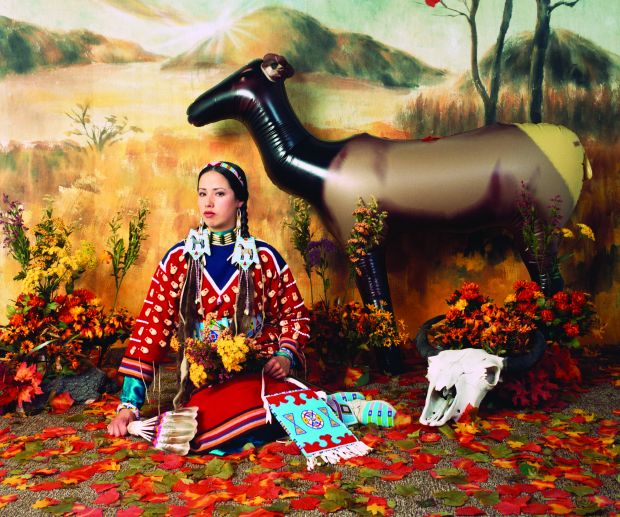
Guiding Questions:
- In what ways could Red Star’s installation artwork be viewed through documentation to illuminate the meaning behind her process?
- If you were Wendy Red Star submitting an AP portfolio, how might you construct the narrative in fifteen images to tell your story?
Adrian Brandon
Adrian Brandon’s recent work, Stolen, has received a lot of exposure as he grapples with injustices against BIPOC across the nation. His work is not only a great example of a response to the world but also clearly demonstrates how intentional artistic decisions impact meaning. Brandon’s portraiture explores the connection between the time taken to create and the time that person lived. “In addition to using markers and pencil, I use time as a medium to define how long each portrait is colored in. 1 year of life = 1 minute of color.” By connecting his process through the passage of time as a medium and with his subject, Brandon’s work demonstrates how time is another media beyond our traditional constraints.

Guiding Questions:
- Identify Adrian Brandon’s media used in these works. How does each media choice impact meaning?
- In what ways can time be used as a medium in art?
As you build a curriculum for your AP classroom, continue to share these overarching concepts and artists with students of all levels. Incorporating a diverse array of artists who demonstrate intentional media decisions, explore concepts through inquiry, and continue to refine throughout a body of artwork will continue to support even our youngest of artists as they grapple with their own creative process.
Who are your favorite artists to support advanced students?
In what ways can we help connect our creative process to artistic outcomes?
Magazine articles and podcasts are opinions of professional education contributors and do not necessarily represent the position of the Art of Education University (AOEU) or its academic offerings. Contributors use terms in the way they are most often talked about in the scope of their educational experiences.
